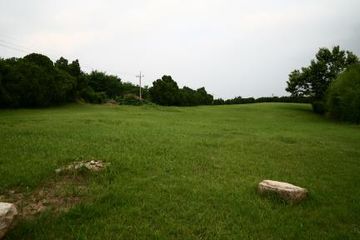경주 동방동 와요지
| 경주 동방동 와요지 Roof Tile Kiln Site in Dongbang-dong, Gyeongju |
|
 경주 동방동 와요지, 국가문화유산포털, 문화재청. |
|
| 대표명칭 | 경주 동방동 와요지 |
|---|---|
| 영문명칭 | Roof Tile Kiln Site in Dongbang-dong, Gyeongju |
| 한자 | 慶州 東方洞 瓦窯址 |
| 주소 | 경북 경주시 동방동 343-4번지 |
| 지정(등록) 종목 | 사적 제263호 |
| 지정(등록)일 | 1978년 6월 23일 |
| 분류 | 유적건조물/산업생산/요업/도자기가마 |
| 시대 | 신라 |
| 수량/면적 | 4,367㎡ |
| 웹사이트 | 경주 동방동 와요지, 국가문화유산포털, 문화재청. |
|
|
|
해설문
국문
이곳은 1977년 택지 조성공사 도중에 발견된 가마터이다. 가마를 운영하기 위해서는 토기나 기와를 만들 수 있는 양질의 흙과 물, 그리고 구워내기 위한 연료가 필요하다. 동방동 일대는 이 같은 조건을 모두 잘 갖춘 지역이다. 또한 서쪽으로 교통로까지 있어 운반이 용이한 곳이다.
국립경주박물관이 모두 9기의 가마터를 확인하고 그 중 1기를 발굴조사 한 결과 가마의 전체길이는 10.5m, 넓이 1.72m로 구릉의 경사면을 이용하여 만든 굴가마[등요, 登窯]로 밝혀졌다. 주변 농경지에서도 가마 흔적이 발견되고 있어 더 많은 시설이 있었던 것으로 보인다.
출토된 기와편은 고려시대에 유행한 새 깃털모양 무늬와 연꽃무늬 장식기와 그리고 조선시대에 만들어진 것이 대부분이다. 특히 가마 바닥에서 ‘건륭(乾隆, 1736~1795)’ 연호가 새겨진 암막새가 출토되어 이 곳 기와 가마들은 고려시대부터 조선시대 후기까지 운영되었던 대규모 기와생산 단지 유적임을 알 수 있게 되었다.
영문
Roof Tile Kiln Site in Dongbang-dong, Gyeongju
This is the site of kilns where roof tiles were produced in mass quantities during the Goryeo (918-1392) and Joseon (1392-1910) periods. The site was discovered in 1977 when the area was undergoing residential land development.
The Dongbang-dong area is well suited for operating kilns because it has good quality soil and water, many trees that can be used for firewood, as well as a nearby transportation route. Nine kilns were identified during a survey of the area, and only one of them has been excavated. It was revealed to be a climbing kiln measuring 10.5 m long and 1.72 m wide. Traces of kilns have also been found in the nearby farmland, suggesting there were more facilities in the area.
The artifacts excavated from this site include shards of roof tiles with bird feather designs and lotus designs, which were popular in the Goryeo period, as well as roof tiles from the Joseon period. At the bottom of the excavated kiln, a convex roof tile inscribed with the era name of the Qianlong Emperor (r. 1736-1795) of Qing China was found to suggest that this kiln was used at least until the 18th century.